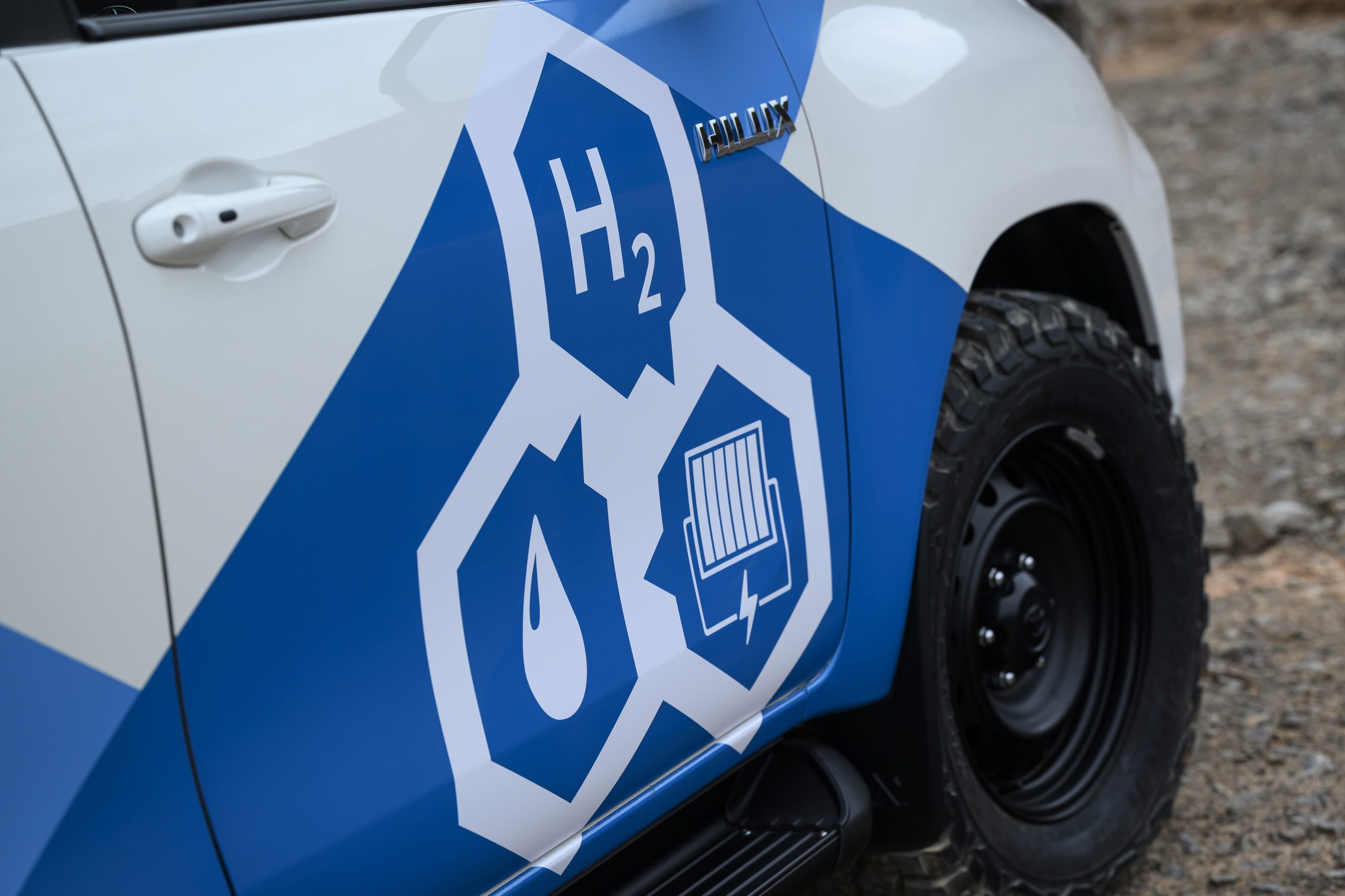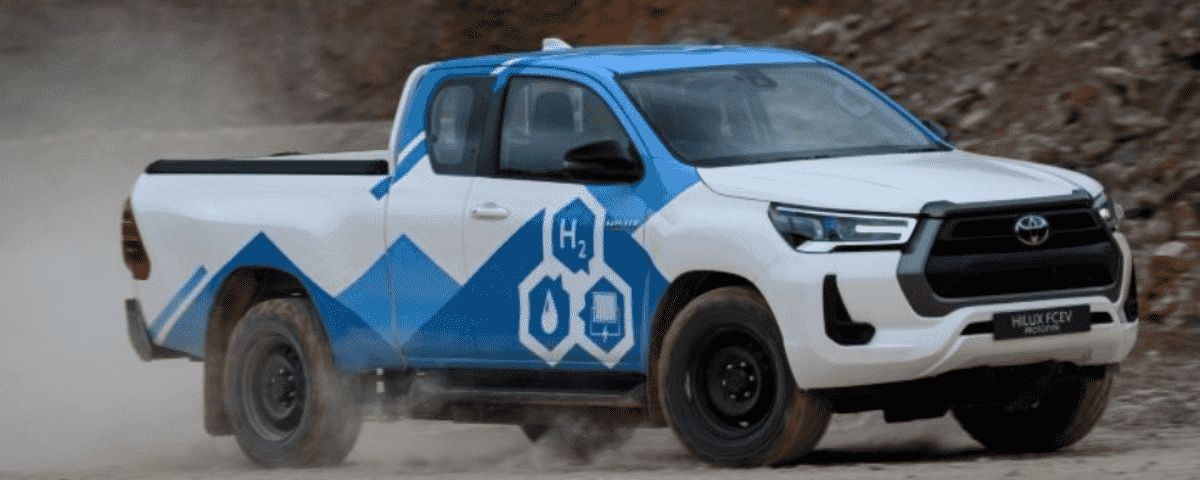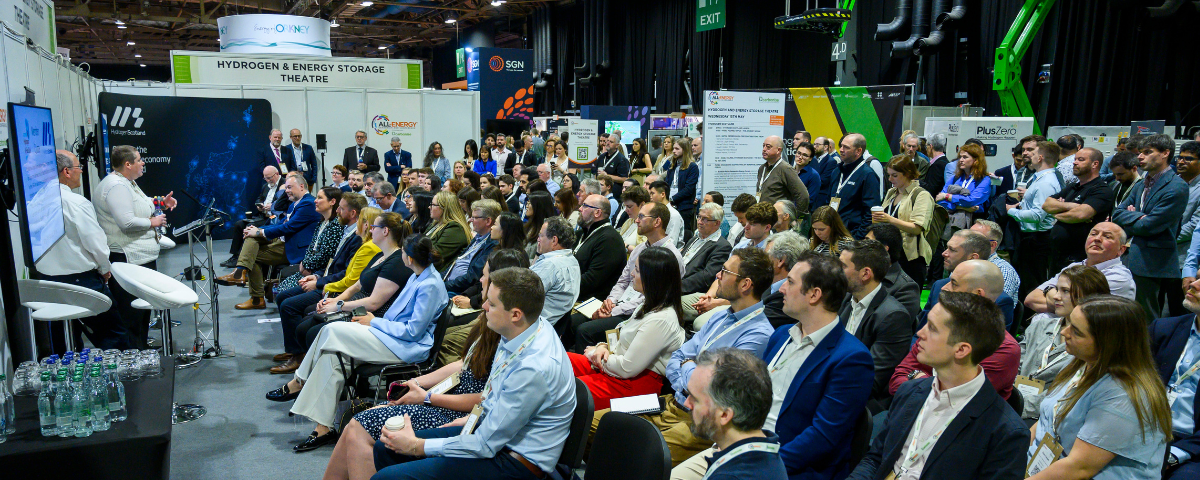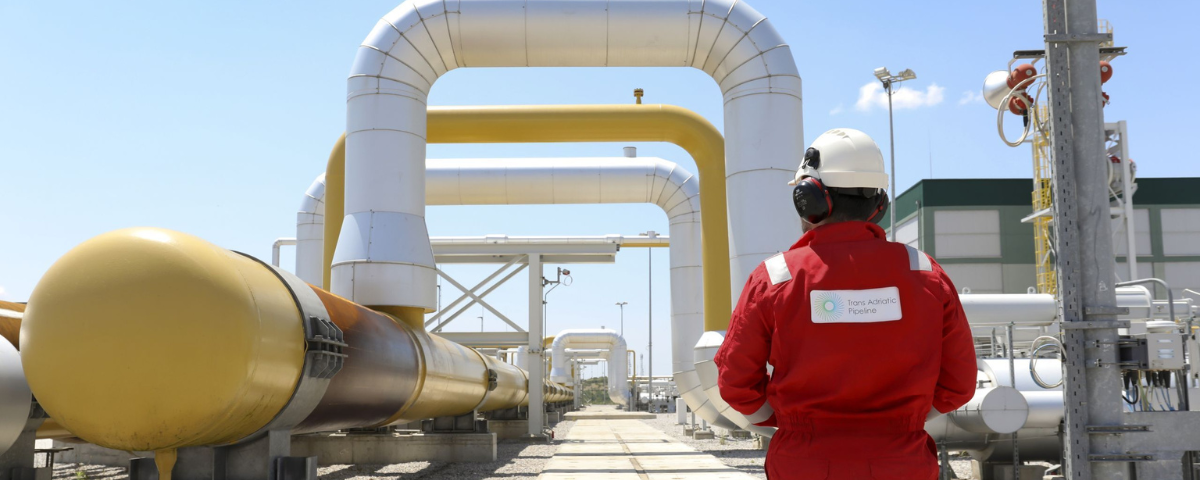Hydrogen Scotland member Toyota has announced that its ground-breaking project to realise a hydrogen fuel cell Hilux pick-up has moved into its final phase. Ten prototype vehicles, powered by Toyota’s fuel cell electric technology and producing no tailpipe emissions, have been built by Toyota Motor Manufacturing UK (TMUK) at their facility in Derby. Evaluation and demonstrations are now underway with these hydrogen fuel cell Toyota Hilux prototypes.
Development of this hydrogen fuel cell Hilux pick-up has involved Hydrogen Scotland member Ricardo who supported preparations for the hydrogen Hilux prototype build, carrying out design and development tasks and confirming the complete manufacturing process in parallel with teams at TMUK. Five vehicles are now undergoing rigorous field testing to assess safety, performance, functionality, and durability, generating test drive data in real-world situations. Five further units are engaged in customer and media demonstrations, including at the forthcoming Olympic and Paralympic Games in Paris 2024.

By engaging customers with hydrogen fuel cell technology, Toyota is laying the groundwork for a successful hydrogen transport sector in the future. Toyota expects Europe to be one of the largest hydrogen fuel cell markets by 2030, with steady growth in mobility and power generation applications. As a result, in December 2023 Toyota announced their Hydrogen Factory Europe, representing Toyota’s co-ordinated approach to the commercialisation of this technology, from development and production to sales and aftersales. The fuel cell Hilux prototype project is an important stepping stone to further develop hydrogen technology and stimulate a wider roll-out of hydrogen ecosystems and infrastructure across Europe.
Based on the Toyota Hilux, with its legendary reputation for durability on the world’s toughest terrain, the hydrogen Hilux prototypes showcase how fuel cell technology can be integrated into a pick-up. Externally, the fuel cell Hilux retains the same dimensions and rugged appearance as the latest Hilux. In extra-cab format, it is 5325 mm long, 1855 mm wide and 1810 mm tall but beneath the surface, Toyota’s fuel cell technology marks it out as a trailblazer.
Power is delivered using core elements from the Toyota Mirai – technology that has proved its quality in almost a decade of commercial production since Toyota introduced the world’s first mass-produced hydrogen fuel cell sedan in 2015. The fuel cell Hilux has an expected driving range of up to 600 km – further than might be achieved with a battery electric system. Meanwhile, thanks to hydrogen’s light weight, a higher payload and towing capability can be achieved compared to other zero-emission alternatives. Hydrogen is stored in three high-pressure fuel tanks, each containing 2.6 kg for a total system capacity of 7.8 kg. The tanks are mounted within the ladder frame chassis.

The polymer electrolyte fuel cell stack contains 330 cells and is mounted above the front axle. The fuel cell Hilux is rear-wheel drive via an e-motor on the rear axle which delivers 134 kW (182 DIN hp) of maximum power and 300 Nm maximum torque. When driving, the fuel cell produces no tailpipe emissions, only pure water. A Lithium-ion hybrid battery, which stores the electricity produced on-board by the fuel cell, is positioned in the rear load deck above the hydrogen tanks to avoid any loss of cabin space.
Since the unveiling of the first hydrogen Hilux prototypes in September 2023, Toyota and its consortium partners, supported by UK Government funding, have reached an intensive evaluation and demonstration stage. The latest landmark in this joint development project further demonstrates the broad scope of Toyota’s multi-path strategy towards carbon neutrality, applying different powertrain solutions – hybrid electric, plug-in hybrid electric, battery electric, fuel cell electric and e-fuels – to suit different user needs and local infrastructure.
To expand the potential of hydrogen beyond cars, Toyota has repackaged its fuel cells into a compact modular form. The main components – the fuel cell stack and components that handle air supply, hydrogen supply, cooling, and power control – are integrated in a compact shape which can be easily adapted into a variety of products and applications. The modules are available in a box or a flat, rectangular format to allow greater flexibility and easier adaptation into new applications.
A key element of Toyota’s plan for an expansion in hydrogen usage is the new, third-generation fuel cell technology currently under development, with sales scheduled for 2026-27. These units will deliver a higher power density and an expected 20% increase in driving range. Technical advances and increased production volumes can help to reduce costs by more than a third. Further research is also looking at the potential of scalable fuel cell stacks with different power outputs and design of fuel tanks with complex shapes, compatible with different size vehicles.




